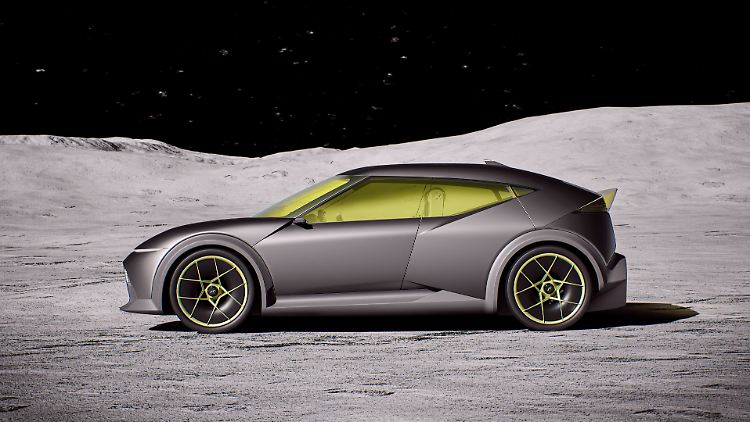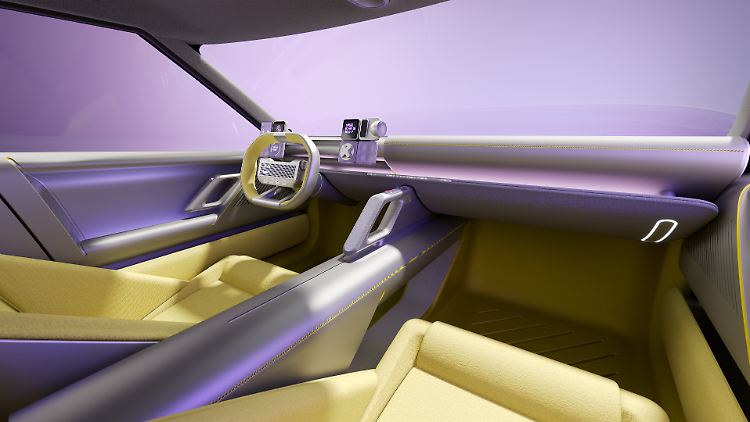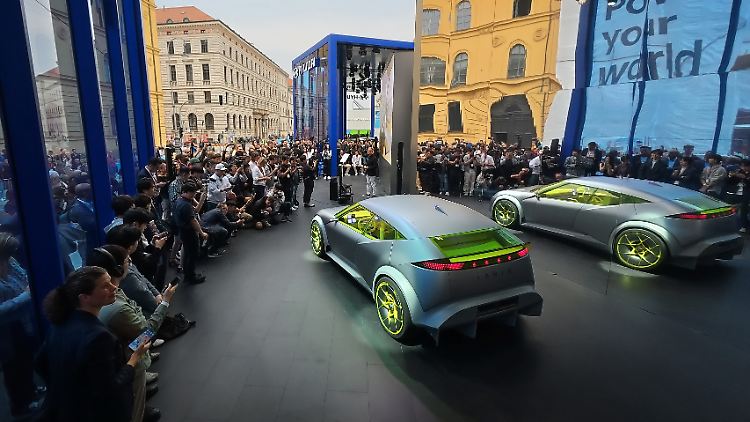Radically designed: A look at Hyundai's new small car with the Concept Three

Pixel graphics, yellow-tinted glass, and matte "Tungsten Gray" paint look pretty fancy. If the production model were even half as cool, that would be quite a statement.
With the Concept Three, Hyundai is offering a glimpse of an electric subcompact that will be released as early as 2026. It's hard to believe, as the study still seems quite visionary. ntv.de has already had the chance to get up close and personal.
The first glance at the Concept Three leaves the viewer with a bit of disbelief, especially since Hyundai is saying, "It's coming next year!" Really? No, it's a bit of a PR stunt, of course, because if you look at the exterior details and the interior, it quickly becomes clear that this isn't a production model. The dashboard is just as minimalist and spacey as the infotainment system. It's pleasing to the eye, but not very homely. However, the concept study does evince its spaciousness – one can only hope that this feature will make it into production.
The wheelbase of 2.72 meters at least leaves plenty of room for interior space. A current Volkswagen Polo, in comparison, is only 2.56 meters. A glance at the exterior reveals a clear conclusion: It looks quite visionary and hardly suggests imminent series production. At least, at first glance.

At under 4.3 meters, the concept remains compact. The window line and domed roof are somewhat reminiscent of Koenigsegg's style.
But with a bit of abstract thinking and a touch of imagination, a production version can also be deduced. Just imagine the spoiler made of yellow-tinted Plexiglas, as well as the extremely flared wheel arches. And the seemingly oversized diffuser is unlikely to make it into production either. However, Hyundai speaks of "aerodynamic efficiency"—and that makes sense, since air resistance is certainly a key to long range and reduced fuel consumption in electric drive.
Concept "Three" looks visually radicalIf you strip away all these elements, you suddenly have a sleek, sporty small car with an exciting look, thanks in no small part to the numerous cleverly placed creases – or depressions. A muscular touch can hardly hurt, even in the lower segment. But how should the B-pillar be integrated into the production car? Rear-hinged rear doors are pretty much out of the question. This makes it all the more interesting to see how Hyundai intends to produce such an eye-catcher in series production without running out of control in terms of costs.
The attentive observer will notice the pixel technology – and it's been known since the Ioniq 5 that the famous pixel lighting design is being used extensively in production cars as a kind of retro-tech style. Whether the future Hyundai subcompact will have its entire bumper covered with LED elements, as in the concept car, remains to be seen.

Such a fragile and minimalist interior is unlikely to be found in the series that will be released next year.
The question remains as to the technology beneath the steel transformed into art, as Hyundai itself likes to say. Perhaps there are surprises waiting here. The company hasn't revealed anything yet except the dimensions of the concept. At just under 4.29 meters, it's slightly smaller than the Kia EV3 – the group's only electric subcompact to date. Hyundai, however, emphasizes that the two vehicles have nothing to do with each other. But the portfolio of drivetrains in the technology department is likely to be limited.
In any case, there's potential for more than 80 kWh of power storage, which would give the future compact car a decent range. And the engine is the standard 204 hp, which would at least provide a good basis for confident driving. There's certainly some room for improvement, if desired, given the sporty nature of the car. It will be interesting to see whether the manufacturer tweaks the charging capacity; however, the company's policy currently calls for 400 volts for the smaller models, which is certainly due to cost considerations.

A cool IAA show appearance with the Hyundai Three Concept. The striking pixel LED lighting is likely to be featured in the production car as well.
Costs aside, sustainability is a key asset for Hyundai, which is why materials made from marine waste products are used for the interior design of both the concept and the series (which is already in practice).
The future electric subcompact is another important component in the electrification of the Hyundai fleet. The company also aims to offer an electrified version of every model by 2027. And by 2030, 21 new electric models are expected to be launched.
Source: ntv.de
n-tv.de





